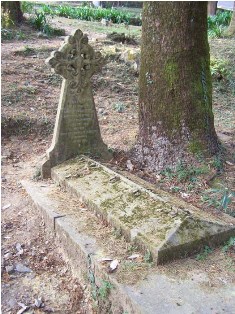Shimla: At Oakover cemetery, the oldest British era cemetery in this erstwhile summer capital of British India that was opened in 1828, 17 out of the 20-odd graves have simply vanished.

Now the Britain-based British Association for Cemeteries in South Asia (BACSA) is ready to support the restoration of Christian cemeteries that lie in a sad condition.
Raja Bhasin, a Shimla-based writer-cum-historian who has compiled a book “The Churches and Christian Cemeteries of Himachal Pradesh” for the state tourism department, said the Oakover cemetery, which was closed for burial in 1841, has only three graves with inscriptions.
“The rest are either damaged or encroached upon,” he said.
The condition of three other British cemeteries in Shimla – Kanlog, Sanjauli and the nun’s cemetery in Navbahar – is also bad.
“There is no trace of the town’s fifth cemetery. It was located somewhere below the old bus stand. The entire cemetery has been gobbled up by slumdwellers,” he said.
BACSA’s honorary secretary Rosie Llewellyn-Jones via e-mail said: “We are particularly sad about the condition of the Shimla cemeteries because, as you know, this was the seat of the British government during the summer months.”
“We have worked on the restoration of some cemeteries in India with Intach (Indian National Trust for Art and Cultural Heritage), but have not previously been involved with the Himachal Pradesh government, except to provide information on the Shimla cemeteries,” she said.
But she said BACSA is keen to restore and preserve the cemeteries in the hill state.
“We are more than willing to support reliable local people with restoration…We believe that if there is local involvement, then the cemeteries have a much better chance of survival,” Jones added.
Many towns still attract descendants of British Raj officials who are eager to know about their roots.
“The cemeteries have really fallen on bad days. Moss is eating into the remains of the graves. Seeing faded epitaphs and missing gravestones is really distressful,” he said, adding “Oh God! Please give some respect to those who died while serving the Raj”.
Tourism Director Arun Sharma said, “On the demand of Christian associations and bodies, we provided a grant of over Rs.50 lakh last year for restoration of historical British churches, including the St John’s Church in McLeodganj in upper Dharamsala.”
He said the tourists, mainly foreigners, who visit the cemeteries have been complaining about the deteriorating condition of graveyards. Even BACSA has expressed concern over these.
The department is keen to provide funds for restoring British graveyards too, provided some Christian association take the initiative, he added.
There are 23 prominent cemeteries in the state. Some of them are two centuries old.
One of the oldest burial grounds in the state is at Subathu, about 65 km from here. It houses most of the graves of British army officers and men who were killed during the war with the Gurkhas in 1814.
Lord Elgin, a Viceroy of British India, lies buried in a cemetery near the St. John’s Church in McLeodganj. His memorial is now a nationally protected monument.
There is also a memorial to Penelope Chetwode at Khanag near Ani in Kullu district. Penelope was the daughter of Field Marshal Baron Philip Chetwode, who had served as commander-in-chief of the Indian Army (1930-35).
She remained in love with the Himachal hills till her death in 1986 on a trek between Shimla and Kullu over the Jalori Pass, says the book on state’s cemeteries and churches.
Briton Danny Welbeck was shocked to see the pathetic condition of the cemeteries in Shimla.
IANS





We don’t need them..!!!!
A round of applause for your article. Will read on…